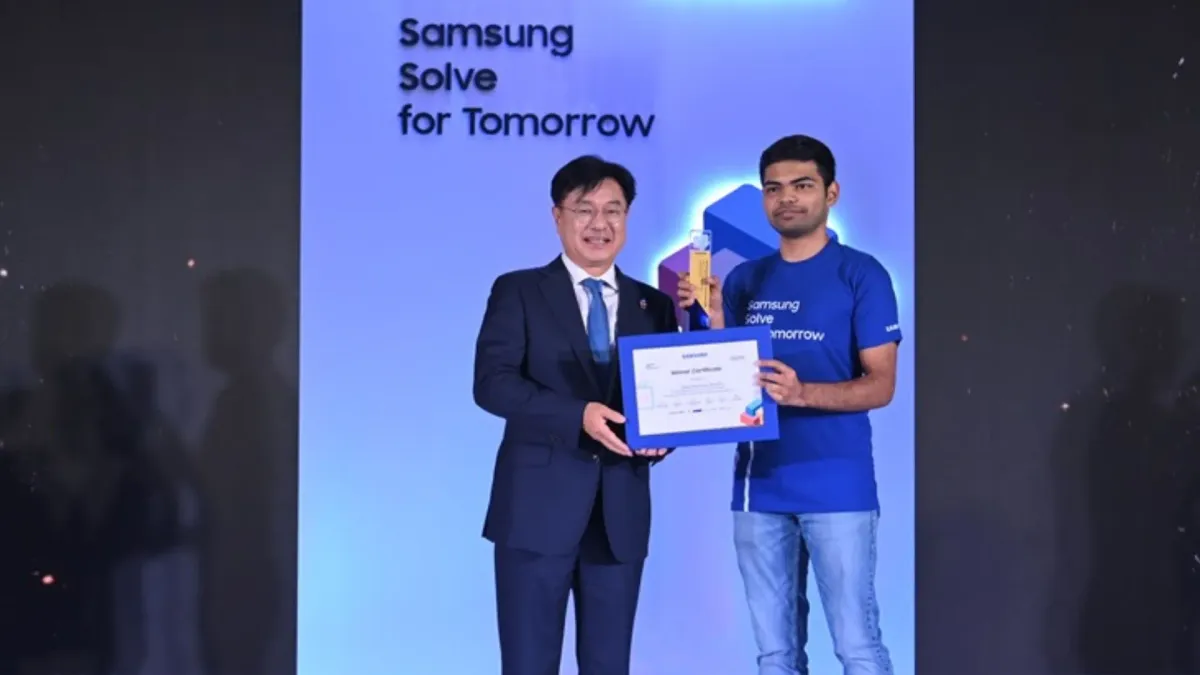Nineteen-year-old Tushar Shaw from Bengaluru, studying at Scaler School of Technology, has created an AI-powered wearable device named Percevia designed to assist visually impaired individuals in perceiving the world around them.
According to Samsung’s announcement, the device emerged as part of the Samsung “Solve for Tomorrow 2025” programme in India.
Percevia integrates multiple sensors, object-recognition cameras and AI-based spatial analysis to generate auditory feedback and subtle haptic cues.
Users wearing the glasses receive real-time descriptions of surroundings including objects, faces and distances, aiding mobility and orientation.
Tushar says his inspiration came from growing up next to a visually impaired neighbour and witnessing daily independence challenges with tasks such as crossing roads or identifying people.
He acknowledges he had little background in computer vision or hardware at the outset but credits the Samsung programme for providing mentorship, resources and confidence to bring his idea to life.
Supporting Ecosystem And Impact Potential
The Samsung Solve for Tomorrow initiative invited young innovators across India to develop technology solutions addressing themes including “AI for a Safer, Smarter and Inclusive Bharat.”
Tushar’s team was selected among four winners and awarded incubation support via IIT Delhi with a grant of one crore rupees.
The broader significance of Percevia lies in how it marries assistive-tech engineering with empathetic design.
By targeting the mobility, recognition and safety needs of visually impaired users, the device aligns with growing trends in personalised AI systems that enable autonomy rather than simply automation.
Among the stated goals for the next phase are field-testing with larger user groups, refinements for indoor navigation and affordability so that the device becomes accessible rather than a niche luxury.
Shaw emphasises that his ambition is to make Percevia “as common as spectacles” for people who need visual support.
AI, Accessibility And Innovation In India
This project highlights several intersecting trends. First, how India’s young engineering talent is turning toward social-impact innovation backed by major corporates and institutional mentorship.
Second, it shows how AI, once siloed in research labs, is now being embedded in wearables and assistive devices designed for real-world users.
Third, by focusing on the visually impaired, a demographic often underserved by mainstream tech, the device points to how intelligent systems can help bridge accessibility gaps rather than widen them.
For the assistive-tech ecosystem, Percevia offers a practical blueprint: integrate object recognition, spatial mapping and user-centric feedback into a wearable form factor.
If scaled and refined, this kind of device could shift how visually impaired users interact with public spaces and digital services.
The path ahead is complex. Questions remain around durability, user comfort, cost, regulatory approvals and how richly the AI can perform in diverse environments.
But Tushar’s achievement signals a meaningful step, both for himself and for a generation of innovators addressing human-centred use cases.
As Percevia moves from prototype to product, it may well become a leading example of how emerging AI can empower rather than just augment, giving people new ways to see, sense and engage with the world.






